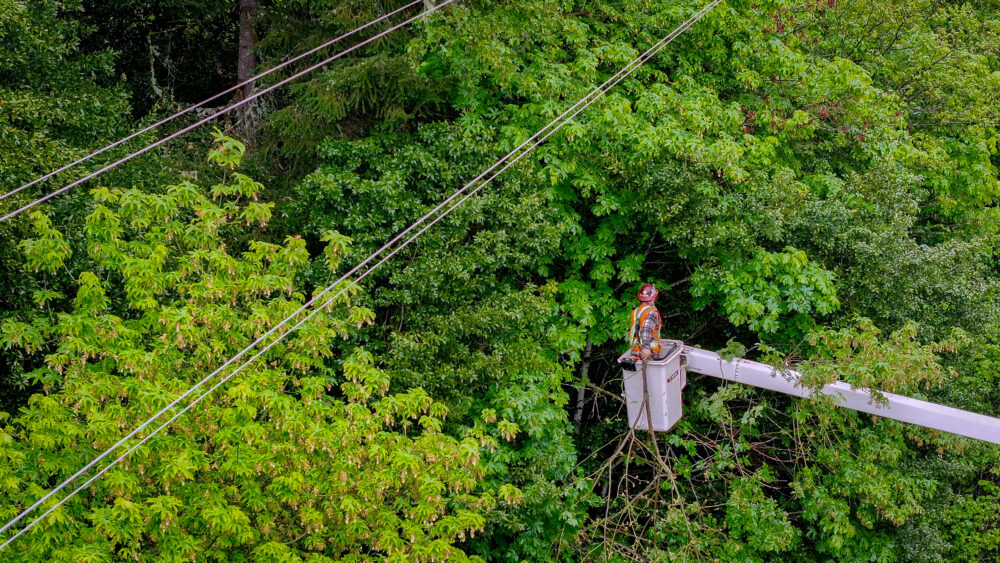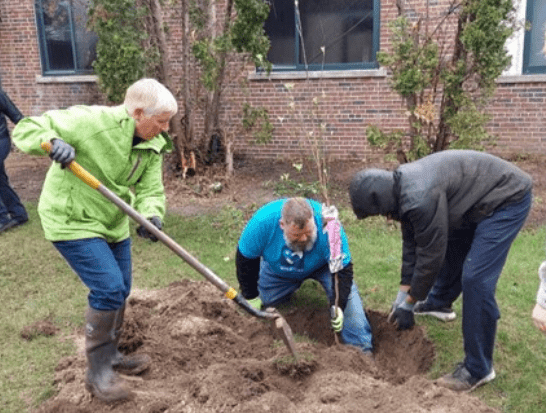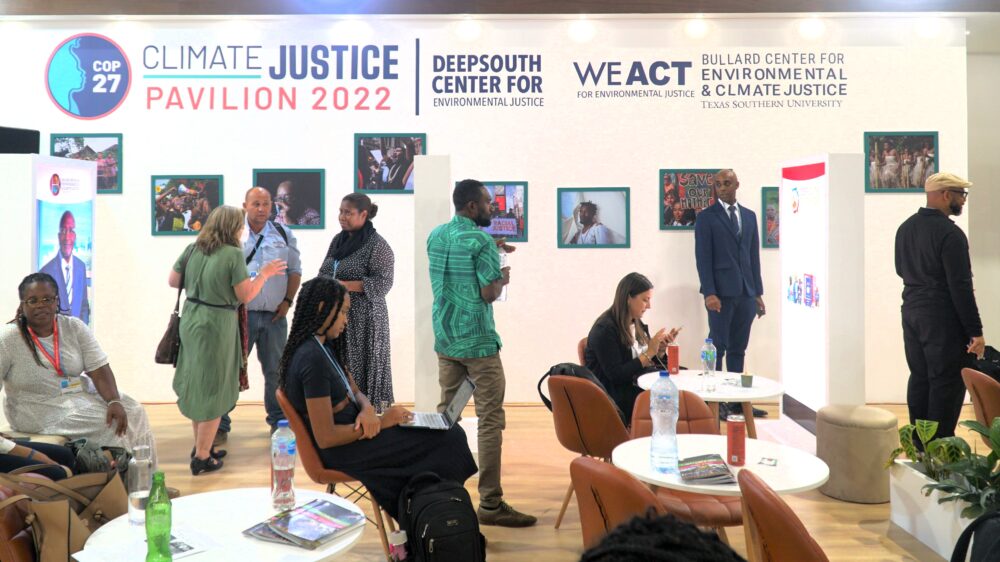We have much more to do and your continued support is needed now more than ever.
The Best and Worst in 2008: Campus Highlights and Lessons for the New Year
With presidents leading the way, campuses shifting to solar energy, record level participation in national education campaigns and students turning out en masse to vote, 2008 was a banner year for campus sustainability.
To sustain this momentum in the coming years and achieve real reductions in pollution on campus, however, we will need more support for faculty and stronger state and federal leadership. Here are our best picks for 2008, and where we have room to grow in 2009.
Best:
Presidents Stepped Up
By December 2008, six hundred and five college and university presidents in every state of the U.S. had signed the American College and University President’s Climate Commitment (ACUPCC). These courageous leaders committed their institutions to doing what the world’s scientists urge is necessary: achieving climate neutrality by or before 2050. Although most of these commitments were secured in 2007, the real push to implement the commitment began in 2008 with most of the signatories submitting greenhouse gas inventories and taking immediate steps to reduce greenhouse gas emissions. Many have also begun to develop climate action plans, setting target dates and interim milestones for becoming climate neutral. In the future, the signatories have agreed to integrate sustainability into the curriculum and to make their action plans, inventories and progress reports publicly available. Credit for this outstanding leadership is due to Dr. Anthony Cortese and his group, Second Nature, as well as to AASHE and Eco-America, and of course, first and foremost, to the presidents themselves.
Butte Threw Down the Gauntlet
As she accepted Butte College’s grand prize in the 2008 National Chill Out Competition, President Diana Van Der Ploeg explained, “Our goal is to be climate neutral by 2010 and I know that is ambitious, but I think we can do it.” The two-year community college in Oroville, CA announced in 2008 that it had devised a plan to reduce its direct emissions of carbon dioxide by 100% by 2015 without relying on carbon credits. Photovoltaic (solar electric) panels, which currently generate about 28% percent of the campus’ electricity needs, will be expanded to meet all campus electricity needs within the next several years. Butte is also successfully moving more than a thousand commuters out of their cars into the largest community college transportation system in California while integrating sustainability into its curriculum.
Students Voted for Clean Energy
More Millennials (youth, ages 18-29) turned out to vote this year than anytime since 1972 and it appears that the prospect of clean energy and green jobs were part of the draw. By election day, the Energy Action Coalition’s Power Vote campaign had generated almost 350,000 pledges from students and other youth who promised to vote and to hold decision makers at all levels of government accountable for shifting to clean energy and creating millions of new green jobs. The number of pledges collected equals about 1/10 of the total increase in the youth voter turnout in 2008, providing a signal that youth enthusiasm for clean energy not only translated to votes, but helped determine the outcome in most of the swing states in the presidential election.
We Engaged at Record Levels
The higher education community engaged at record levels in national sustainability initiatives in 2008. According to event organizers’ tallies, 1,365,250 students, faculty and staff at approximately 2,100 college and universities (that’s more than half of all colleges and universities in the country) participated in a range of events focused on advancing sustainability and climate action. The largest event by far (and the largest ever of its kind that we know of in the US on sustainability and climate action) was the Focus the Nation teach-in (now known as the National Teach-In) held on January 30, 2008 with an estimated one million participants at 1,900 campuses. Other record-breakers included the National Campus Chill Out Competition Earth Day Awards Broadcast (13,550 participants at 330 campuses made it the largest campus sustainability and climate action awards program in the U.S.) and the AASHE conference (1,700 participants from 400 campuses made it the largest higher education sustainability conference held to date and one of the largest campus environmental conferences held in two decades). If you add the 350,000 pledges collected by the Energy Action Coalition during Power Vote, involvement levels in 2008 swell to more than 1.7 million.
Worst:
Faculty Not Keeping Pace
While many college presidents have committed their institutions to bold action to address climate change, few faculty have caught up with the vision and management of their campuses. A national study, Campus Environment 2008, conducted by Princeton Survey Research Associates International for the National Wildlife Federation at 1,068 campuses concluded that little if any progress has been made in educating students for sustainability since the study was first conducted in 2001. At only a minority of schools, for example, have fifty percent or more of the students taken a course on the basic functions of the earth’s natural systems and even fewer have taken courses on the connection between human activity and environmental health. Areas such as business, engineering and teacher education still lag far behind the natural and physical sciences in offering environmental or sustainability courses within their disciplines. Part of the reason for this may be that only a minority of campuses have program to support faculty professional development on environmental or sustainability topics and an even smaller minority formally evaluate or recognize how faculty have integrated sustainability topics into their curriculum. Dr. Jean MacGregor’s Curriculum for the Bioregion Initiative -based at Evergreen State College in Olympia, Washington-is one of the leaders in bringing faculty from multiple institutions together to develop best practices for educating for sustainability within and among diverse disciplines.
States Slowed Innovation
While it is important to work towards effective federal legislation to curb GHG emissions in the U.S., there is much that can be done at the state level to boost innovation. Unfortunately, many states are missing these opportunities. According to the U.S. Department of Energy, as of 2008, only 24 states and the District of Columbia have renewable portfolio standards (RPS) in place that require power generators to generate a specific percentage of renewable energy by specific dates. Campus renewable energy programs in states with strong REPS thrived this year, but their counterparts in other states were at a comparative disadvantage, including campuses in states with non-binding standards (Illinois, Virginia, Vermont and Missouri) and in states with no renewable portfolio standards at all (Alabama, Alaska, Arkansas, Florida, Georgia, Idaho, Indiana, Kansas, Kentucky, Louisiana, Michigan, Mississippi, Nebraska, North Dakota, Oklahoma, South Carolina, Tennessee, West Virginia and Wyoming).
Communities Remained Gridlocked
A handful of campuses all across the U.S., including Colorado University, the University of Montana, University of North Carolina at Chapel Hill and the University of Washington have begun to demonstrate ways to effectively move students, faculty and staff out of single-occupant vehicles into more sustainable transit options. The vast majority of campuses, however, remained gridlocked in 2008. The Campus Environment 2008 study revealed that a select few schools offered free or discounted bus or public transit passes, carpooling or vanpooling programs, or other incentives not to drive alone in 2008.As we seek solutions in 2009 and beyond, Will Toor and Spenser W. Havlick’s book, Transportation and Sustainable Campus Communities (Island Press, 2004) provides an excellent blueprint for developing greener transportation plans, transit systems, fleets and more and Toor’s article, “The Road Less Traveled,” in Walter’s Simpson’s new book, The Green Campus: Meeting the Challenge of Sustainability (APPA, 2008) provides additional insights.
Fossil Fuels Reigned
Although the anecdotal evidence of campuses generating clean power on site or purchasing carbon credits or renewable energy certificates is mounting, fossil fuels remained by far the dominant source of energy in 2008. Eighty-six percent of schools generated no renewable energy on-site in 2008 at all for heating or cooling; less than 8% purchased renewable energy certificates or carbon credits to promote cleaner energy from off-site sources; and less than 12% used wind, solar electricity, biomass or other clean sources on site to generate electricity. At carma.org, where it is possible to look up college and university power plants, it is surprising how many campuses, even with robust and visible sustainability programs, are running plants that emit comparatively large amounts of greenhouse gases, using coal and other relatively polluting fuel mixes. Many of these campus plants are listed as planning to produce similar or greater CO2 output in the future and none indicated a planned reduction.
To Conclude:
Ultimately, a dramatic collective reduction in campus global warming pollution was not the headline this year, but we made considerable progress. Between hundreds of thousands of student pledges to hold elected officials accountable for clean energy and green jobs, a massive teach-in on global warming solutions, and hundreds of presidents’ climate commitments, 2008 signaled a wide-spread understanding that global warming is a real problem, requiring a willingness to set what seem like nearly impossible goals in order to quickly cap and begin to reduce concentrations of greenhouse gases in the earth’s atmosphere.
Confucius said, “When it is obvious the goals cannot be reached, don’t adjust the goals, adjust the action steps.” President Diana Van Der Ploeg of Butte College and hundreds of other college and university presidents all across the country have signaled a willingness to do just that, aiming towards climate neutrality with the hard work ethic and inventive spirit that represents the best of what we have been and can be as a nation.




















